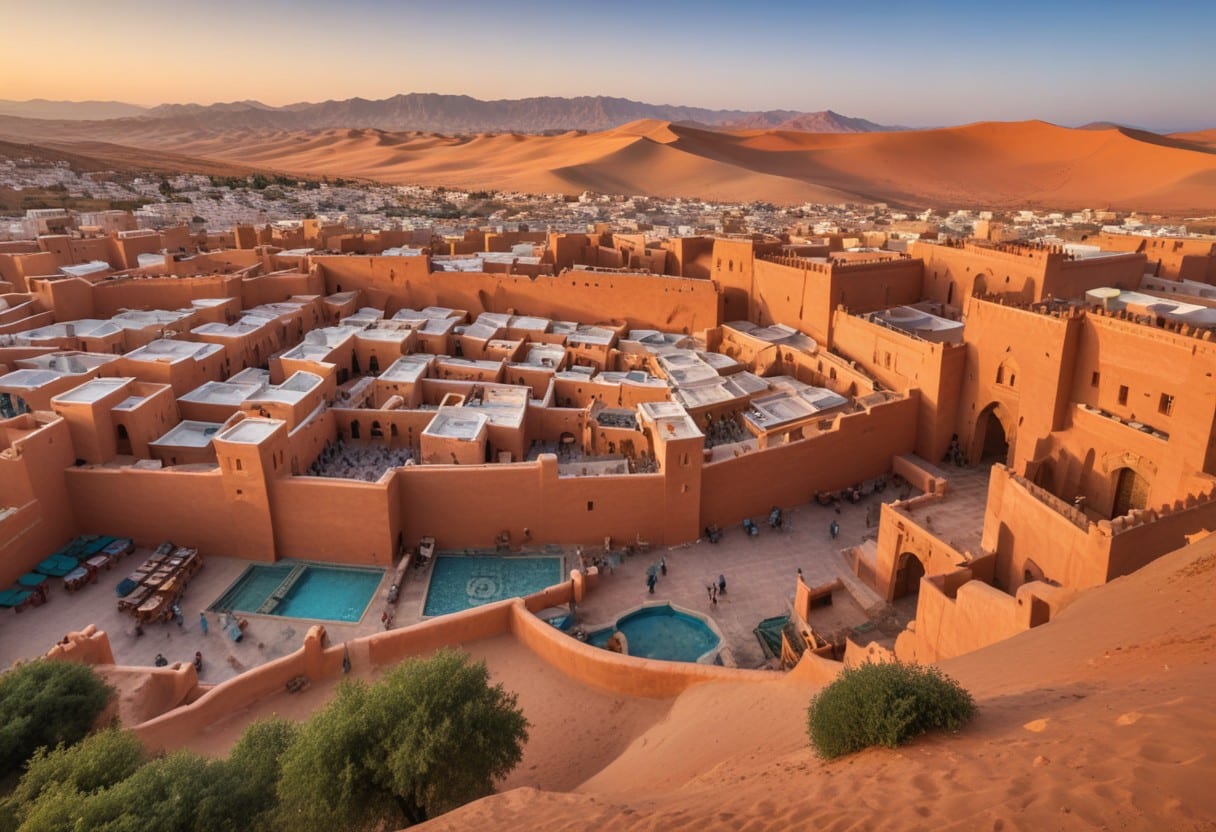Table of Contents
Embarking on a Morocco luxury tour promises an unforgettable experience filled with rich culture, stunning landscapes, and luxurious accommodations.
City dwellers are always looking for news and information about what is happening in their city. Those living in Chicago, Austin, and Phoenix have great resources on the web. UrbanMatter covers these three great cities’ venues, restaurants, festivals, and music events. City living is fantastic, but we all need a break, and traveling to Morocco could provide that break, so here are some essential tips to make the most of your journey:
Choose the Right Time to Visit
Morocco’s climate varies across regions. Spring is ideal for pleasant weather and blooming landscapes. Most people will find the scorching summer months, June to August, impossibly hot for exploring this magnificent country. The winter months, from December to February, can be very chilly.
Atlantic Coast (Tangier, Casablanca, Agadir, Essaouira):
This region is spring-like, with long periods of good weather. Average temperatures range from around 12.5°C (54.5°F) in January to 25°C (77°F) in August. The summers are pleasantly warm and sunny. Rainfall is relatively low, but occasional intense showers occur from November to March.
The sea temperatures are cool due to a westward-flowing cold current. It’s worth noting that the southern coast (e.g., Essaouira, Agadir) has slightly cooler sea temperatures than the northern part (Tangier to Casablanca).
Inland Areas (Marrakesh, Meknes, Fez):
Morocco’s inland areas are semi-arid, with mild winters and hot summers. The rainy season extends from November to April. The summers are pleasant, with average temperatures ranging from 5°C (41°F) in January to 22°C (71.5°F) in August. In winter, snow is possible.
Desert Areas (Sahara):
Unsurprisingly, the desert areas have scorching daytime temperatures, especially during the summer when they can exceed 40°C (104°F). At night, the temperatures drop drastically and can fall below freezing. Don’t let this stop you from visiting the desert, as it’s a fascinating biome.
Mediterranean Coast (Al Hoceima, Tétouan):
This region has a climate similar to the Atlantic coast but slightly milder. The summers are warm, and the winters are very mild. However, watch for the rainfall, which is concentrated from November to April.
Respect Local Customs and Etiquette
When traveling to Morocco, one must know local customs and etiquette to show respect and avoid unintentionally offending anyone. Wear respectable clothing, especially around mosques and rural areas, and avoid sleeveless or tight clothing. Remove your shoes before entering someone’s home or a mosque.
Use your right hand for greetings, with handshakes a standard feature. Use your right hand when eating, but never with your left; it’s considered impolite. If you’re sharing a communal bowl, stay within your boundaries and avoid reaching across the bowl.
Respect the religious sites and understand that if you’re not Muslim, you won’t be allowed inside most mosques. If you visit during Ramadan (the holy month), be mindful that locals fast from sunrise to sunset. Avoid eating, drinking, or smoking in public during fasting hours.
Visit a Souk for Shopping
Morocco’s souks are vibrant, bustling markets that offer a sensory overload of colors, scents, and sounds. The souks in Marrakech are a maze of narrow alleys filled with stalls selling everything from spices and textiles to ceramics and leather goods. They open around 10 am and close between 7 pm to 9 pm.
For an authentic experience, consider hiring a reputable local guide or joining a group tour. Be cautious of unregistered guides, as they may be scams. Guides will show you hidden gems and lesser-known spots. Be prepared to haggle, as bargaining is part of the experience, but do so respectfully. While many products are cheap, not everything, especially rugs, are more expensive.
Money in Morocco
The official currency in Morocco is the Moroccan Dirham (MAD). One dirham is made up of 100 centimes and is currently worth approximately USD 0.09.
You’ll rarely use the 10 and 20-centime coins. Instead, focus on coins worth half, one, two, five, and ten dirhams for everyday spending. The banknotes include 20, 25, 50, 100, and 200 dirhams.
It’s illegal to bring Moroccan dirhams into the country. You can exchange foreign currency at exchange bureaus at Moroccan airports and major cities. You can also withdraw dirhams from ATMs using your debit or credit card. Most places accept credit cards, but having cash for smaller purchases is wise.
Be Careful When Taking Photographs
Photographing in Morocco offers a wealth of captivating subjects, from bustling markets to stunning landscapes. Drones are not allowed in Morocco. Refrain from photographing military, police, and government facilities. Exceptions include guards at specific sites, such as the Mausoleum Mohammed V in Rabat or the Royal Palace.
When capturing street and portrait photography, be culturally sensitive. Respect privacy, especially regarding family life. Remember that Morocco, like many Muslim countries, values privacy. In some cases, locals may ask for a “donation” to allow you to capture specific photo opportunities. Use discretion and negotiate politely.
Book That Luxury Tour to Morocco Today
Morocco is a land of contrasts, where ancient cities, rugged mountains, and sweeping deserts await exploration. Whether you wander through the colorful souks of Marrakech, hike in the High Atlas Mountains, or ride a camel in the Sahara, Morocco offers something for every traveler.
Enjoy the rich culture, savor the cuisine, and sip mint tea while admiring stunning architecture and art. Plan your itinerary loosely, take public transport, and embrace the art of haggling while shopping.



